Discover the names of the 18 best climbing and vining vegetables for containers. These veggies are productive and can grow vertically!
1. Rocoto Pepper
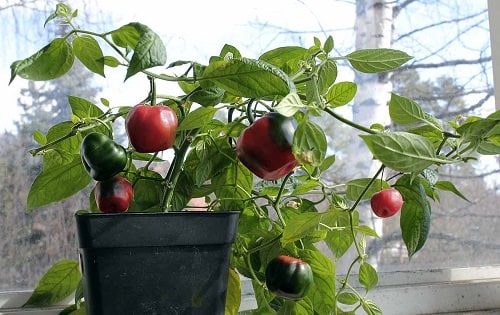
This South American perennial pepper plant is something between a climber and a shrub. The best part is that it can live for a decade, producing fruits productively. While it looks like bell pepper, it surely has rich-hot taste.
Rocoto grows best in warm weather, but it’s more cold-hardy than many other pepper cultivars. You can grow it in a large pot and move it to a protected area in winters in a cold climate. And, if you live in a frost-free area, don’t worry.
2. Nasturtium

Edible and ornamental, nasturtiums are known for their tasty, color-saturated flowers and vibrant shield-shaped leaves that have a pleasant peppery and a mustard-like flavor.
Good for salad decoration, nasturtium is easy to grow in containers. It develops at a rapid pace once planted and starts flowering within four to six weeks.
3. Climbing Tomatoes
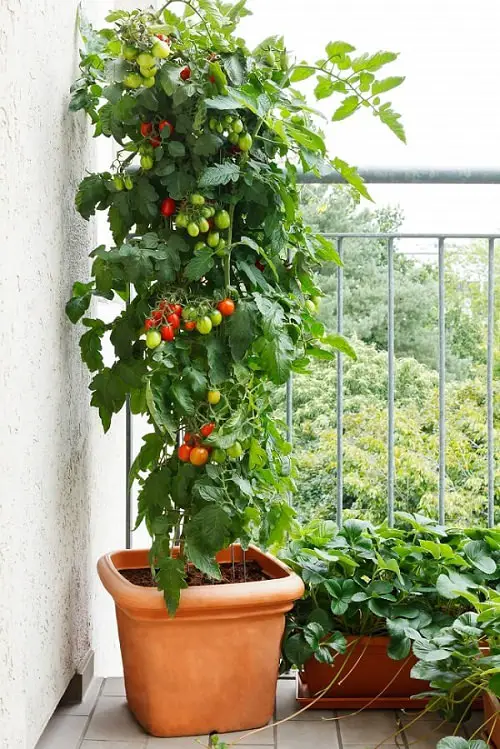
Anyone with a green thumb will tell you how rewarding it is to toss slices of fresh, home-grown tomatoes in a plate of salad or to eat it any other way.
There are many varieties of tomatoes that follow a vinelike growing habit. We posted a great list of tomato varieties for containers, so look at it to decide!
4. Malabar spinach
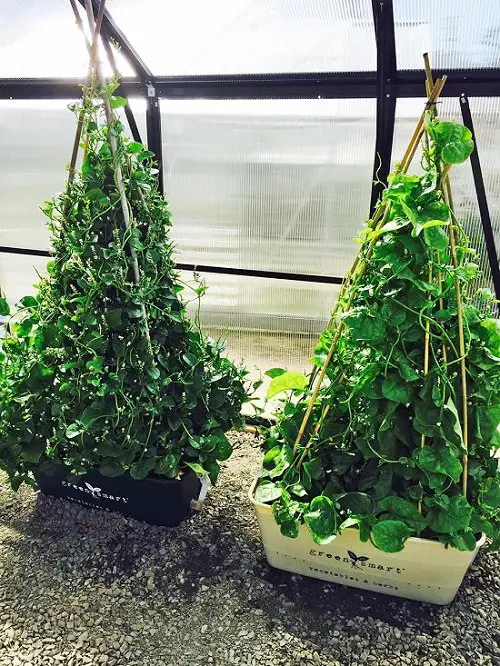
An ideal provider of leafy greens–Malabar spinach multiplies well, it is so productive even in containers that it never stops producing in favorable growing conditions. Despite being a tropical perennial, it performs well in milder climates.
Start the seeds indoors and wait until the last frost date before transferring outdoors. As time marches, the plant gets overly bushy, and you may need to harvest it intermittently and provide solid support to the vine for optimal growth.
5. Loofah
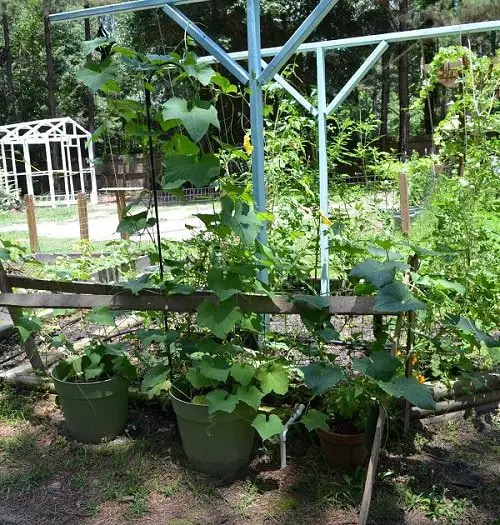
Loofah has long been used as a natural sponge than as food. Nevertheless, it’s still extremely useful in both these cases. Harvest of nascent loofah gourd yields delicious vegetable that can be cooked, like summer squash.
In addition to its medicinal benefits, there are many delicious curry recipes available on the web if you search a little. This hot weather gourd can also be grown in large containers.
6. Chayote
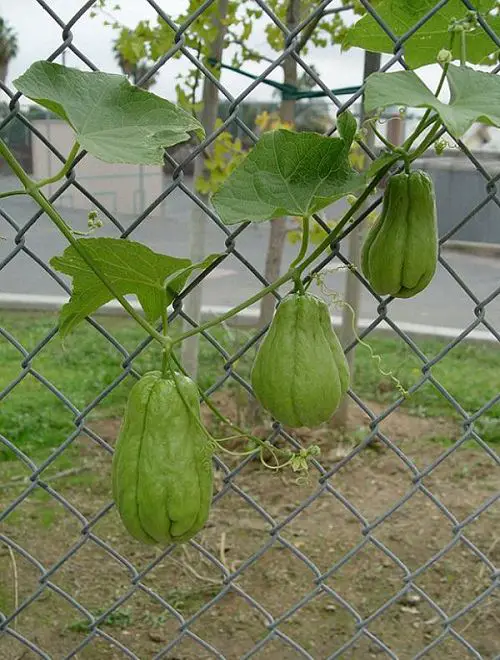
Chayote produces cool-looking pear-shaped, pale-green fruits that are akin to pumpkin and grow well in subtropical environments just as well as moderately cool climates.
Growing chayote in a container is a good idea for people living in short-summer regions as these incredibly productive vines can be brought into a protective area once the temperature turns cool.
7. Pumpkin
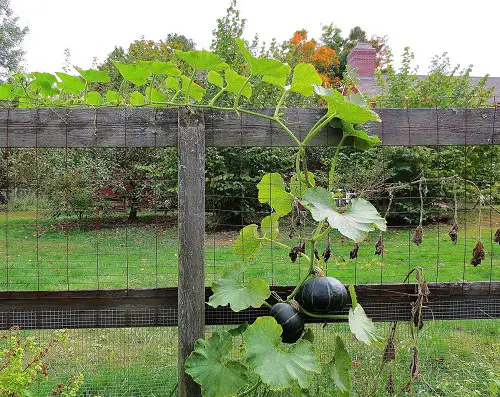
Growing pumpkins in containers is possible; you’ll need a large container and the right soil blend. Pumpkins require a sunny position, moist soil, and shelter from the harsh, cold wind.
Smaller varieties of pumpkin, including Baby Pam, Small Sugar, and Spooktacular, adapt well to the container culture and yield miniature five-pound fruits that are easy to harvest and largely resistant to common insects and pests like aphids and squash bugs.
Learn how to grow pumpkin in pots here
8. Pole Beans
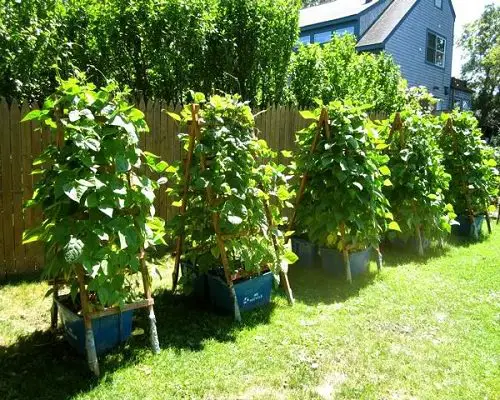
Pole bean vines grow to a convenient height of about 6 to 10 feet, making them a suitable vegetable to grow in large pots and buckets, even on balconies. Some of the best bean varieties for pots are here!
Growing beans in containers is particularly useful for starting early when the soil temperatures are too cool to support the growth of this warm-season vegetable. Like most bean species, pole beans resist transplanting and hate when the temperature dips pretty low.
9. Runner Beans
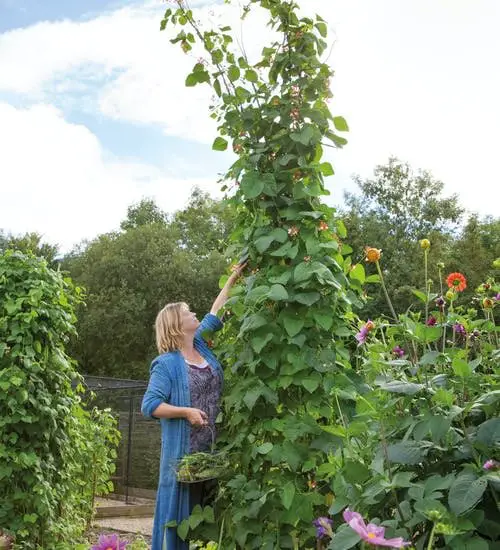
One of the most productive vegetables for limited space gardeners, runner beans are often used for their ornamental blooms, though they also produce edible leaves, green pods, and dried beans.
They rely on plenty of water, full sun, and fertile soil to survive well. Runner beans are good for mild regions without extremes of heat or cold. They can also tolerate light shade and wet climate. It’s advisable to pick the beans small while they are still delicious and tender.
10. Peas
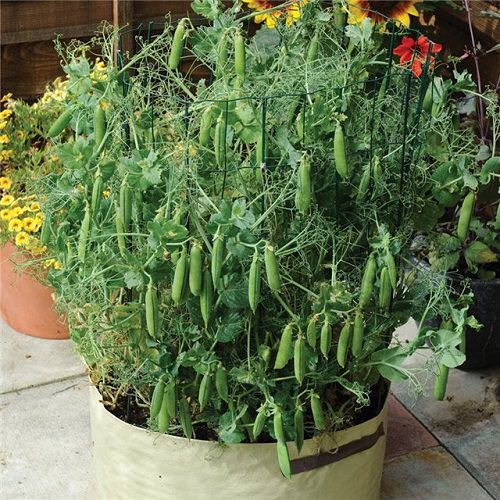
Peas are one of the best vegetables to grow in pots. They grow rapidly and don’t demand too much attention. Also, they are rather forgiving of climatic conditions and don’t depend on the full sun, and perform well even in partial shade. However, they do benefit from regular watering and fertile soil.
Since peas prefer cool conditions, it’s best to plant them early on in the season in the spring and sometimes in the fall. In warmer regions with a mild winter season, grow peas in winter!
Learn how to grow peas in pots here
Continue to next page>>>
Pin it!
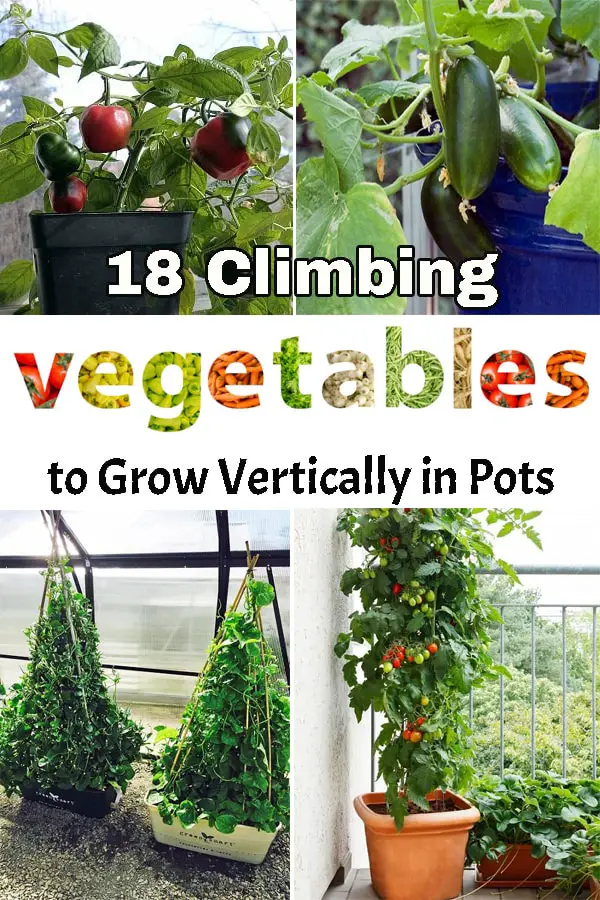



Thank you for presenting such an informative article! I like the idea of training my climbers especially my roses to grow in pots. You can also engage them on garden trellises and train them well. Just be sure to use strong-gauge galvanized wire to hold and support your climbing plants firmly. Cheap wires will rust and make it difficult for you to correct the problem when your climbers break the wires as they grow. After seeing just how beautiful they look, I will indeed experiment with growing some of the beans in containers.
Not all of these are vegies, some are fruit. Mentioning would add credibility.
Thenk you .. I get to another level
Very good